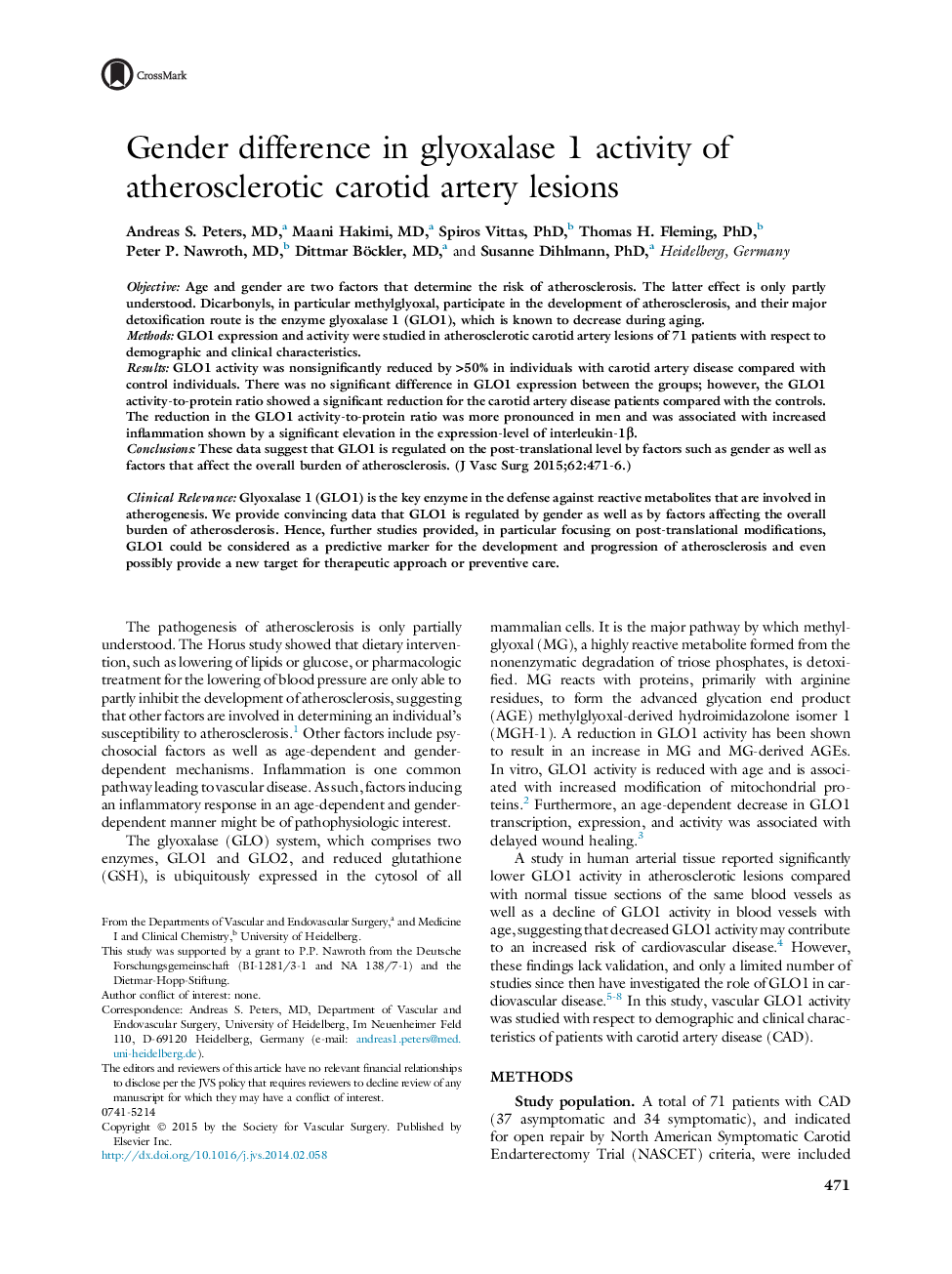| Article ID | Journal | Published Year | Pages | File Type |
|---|---|---|---|---|
| 5993824 | Journal of Vascular Surgery | 2015 | 6 Pages |
ObjectiveAge and gender are two factors that determine the risk of atherosclerosis. The latter effect is only partly understood. Dicarbonyls, in particular methylglyoxal, participate in the development of atherosclerosis, and their major detoxification route is the enzyme glyoxalase 1 (GLO1), which is known to decrease during aging.MethodsGLO1 expression and activity were studied in atherosclerotic carotid artery lesions of 71 patients with respect to demographic and clinical characteristics.ResultsGLO1 activity was nonsignificantly reduced by >50% in individuals with carotid artery disease compared with control individuals. There was no significant difference in GLO1 expression between the groups; however, the GLO1 activity-to-protein ratio showed a significant reduction for the carotid artery disease patients compared with the controls. The reduction in the GLO1 activity-to-protein ratio was more pronounced in men and was associated with increased inflammation shown by a significant elevation in the expression-level of interleukin-1β.ConclusionsThese data suggest that GLO1 is regulated on the post-translational level by factors such as gender as well as factors that affect the overall burden of atherosclerosis.
Clinical RelevanceGlyoxalase 1 (GLO1) is the key enzyme in the defense against reactive metabolites that are involved in atherogenesis. We provide convincing data that GLO1 is regulated by gender as well as by factors affecting the overall burden of atherosclerosis. Hence, further studies provided, in particular focusing on post-translational modifications, GLO1 could be considered as a predictive marker for the development and progression of atherosclerosis and even possibly provide a new target for therapeutic approach or preventive care.
